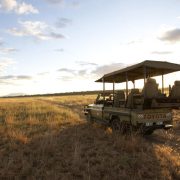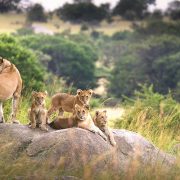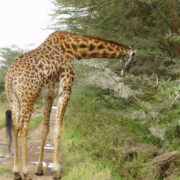Masai Mara vs Serengeti: Which is Better?
- Travel Tips, Wildlife
- October 14, 2025
You’re planning your dream African safari, and you’ve narrowed it down to two legendary destinations: Kenya’s Masai Mara or Tanzania’s Serengeti. Both promise incredible wildlife encounters, dramatic landscapes, and the spectacle of the Great Migration—but which one should you choose?
After leading safaris across East Africa for over a decade, I can tell you this: there’s no universally “better” choice. The right destination depends on your priorities, budget, travel style, and timing. In this comprehensive comparison, I’ll break down exactly what makes each park unique, helping you make the perfect choice for your safari adventure.
Quick Answer: The Masai Mara is ideal if you want easier access, shorter travel times, and concentrated wildlife viewing during the migration months (July-October). Choose the Serengeti if you prefer vast, uncrowded landscapes, year-round wildlife diversity, and a more exclusive safari experience with opportunities to combine with other Tanzanian parks like Ngorongoro Crater.
Size and Landscape: The Serengeti's Endless Plains vs Masai Mara's Intimate Setting
Serengeti: Africa's "Endless Plains"
The name “Serengeti” comes from the Maasai word “Siringit,” meaning “endless plains“,—and it lives up to that description. Spanning over 14,763 square kilometres, the Serengeti is nearly ten times larger than the Masai Mara. This vastness creates a sense of true wilderness that’s hard to replicate anywhere else in Africa.
The Serengeti’s landscape is remarkably diverse. While many imagine endless grasslands (which dominate the southern and central regions), the park also features:
- Rocky kopjes (granite outcrops) where lions lounge and leopards hunt
- Riverine forests along the Grumeti and Mara rivers
- Woodland savannah in the western corridor
- Rolling hills in the north near Kenya’s border
This diversity means you can experience multiple ecosystems in a single safari, each supporting different wildlife concentrations.
Masai Mara: Concentrated Wildlife Haven
The Masai Mara National Reserve, at 1,510 square kilometres, is significantly smaller—but don’t mistake size for quality. The Mara’s compact nature is actually an advantage for safari-goers with limited time. You can cover more ground in fewer days, and the wildlife density here is among the highest in Africa.
The Mara’s landscape is predominantly:
- Open grassland plains perfect for spotting predators
- Acacia-dotted savannah providing classic African scenery
- The Mara River with its steep banks and resident hippos
- Escarpment views offering stunning panoramas
What the Masai Mara lacks in size, it compensates for with accessibility and concentrated game viewing. You’re rarely more than 30 minutes from exceptional wildlife sightings.
Winner for Landscape Diversity: Serengeti
Winner for Concentrated Viewing: Masai Mara
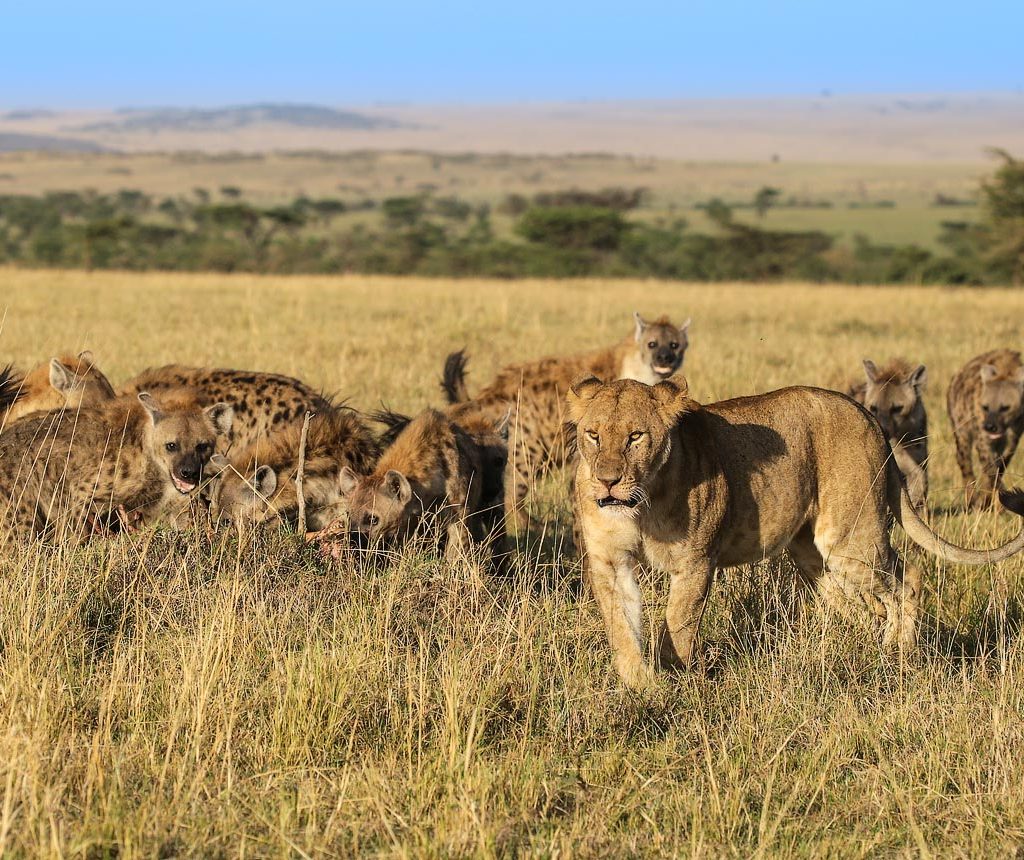
Wildlife Viewing: Where You'll Actually See the Most Animals
Both destinations offer world-class wildlife viewing, but they excel in different ways and at different times of year.
The Big Five in Both Parks
You can see all of Africa’s Big Five (lion, leopard, elephant, buffalo, and rhino) in both parks, though with some important distinctions:
Lions: Both parks have thriving lion populations. The Mara has approximately 400-450 lions, while the Serengeti has around 3,000 lions spread across its vast territory. In the Mara, you’re more likely to encounter multiple prides in a single day due to the smaller area.
Leopards: Both offer excellent leopard sightings, though the Serengeti’s kopjes (rocky outcrops) provide prime leopard habitat. Skilled guides in both locations know the territories of individual leopards.
Elephants: The Serengeti has larger elephant herds, particularly in the northern regions and Seronera area. The Mara’s elephant population is smaller but still regularly encountered.
Buffalo: Massive buffalo herds roam both parks. During the migration season, you’ll see thousands of buffalo alongside wildebeest.
Rhinos: This is where the parks differ significantly. The Masai Mara has a small but growing black rhino population. In the Serengeti proper, rhinos are extremely rare (though nearby Ngorongoro Crater offers excellent rhino viewing). If seeing rhinos is a priority, consider adding Ol Pejeta Conservancy or Lake Nakuru to a Kenya safari.
Cheetah Capital: Both Excel
Both the Masai Mara and Serengeti are among the best places on Earth to see cheetahs. The open grasslands provide perfect hunting grounds, and you might witness dramatic high-speed chases if you’re lucky.
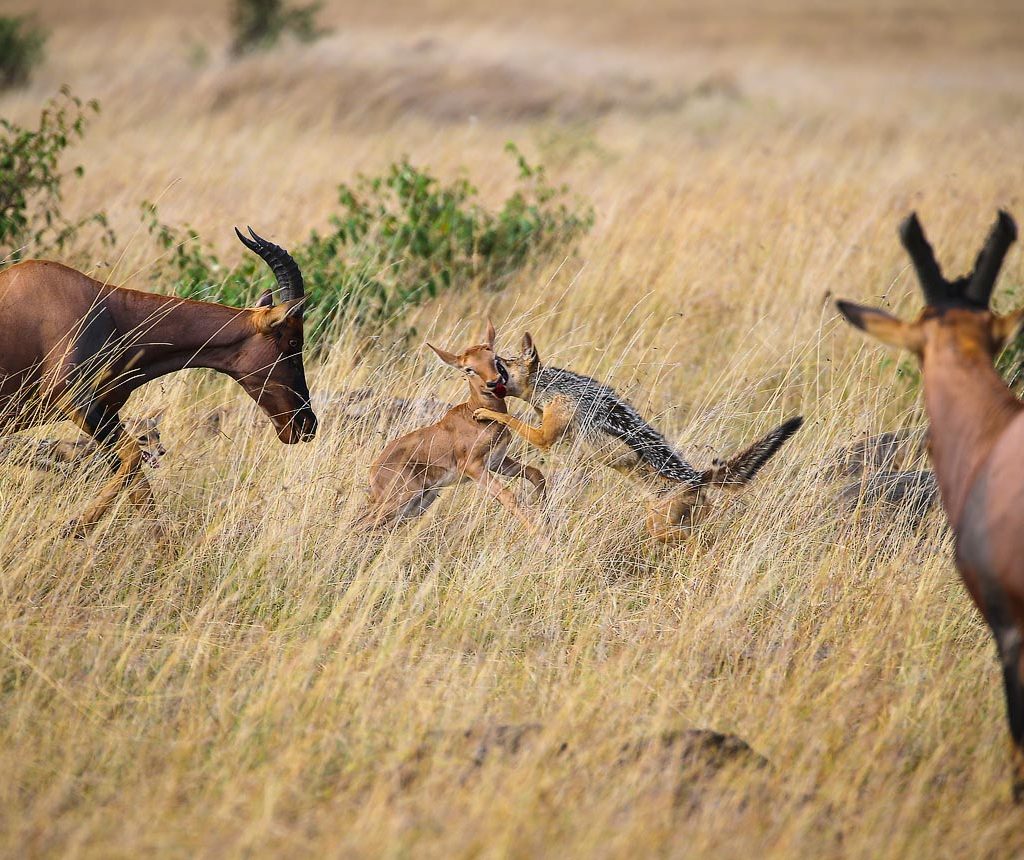
Other Notable Wildlife
Masai Mara Hightlights
- Huge hippo populations in the Mara River
- Topi, Thomson’s gazelles, and Grant’s gazelles
- Hyena clans (often seen during the migration)
- Over 470 bird species
Serengeti Highlights
- Often requires moving camps to follow migration
- Longer game drives common (sometimes 4-6 hours)
- Fly-camping and mobile camps follow the herds
- More driving time but also more diverse scenery
Wildlife Density: The Numbers Game
Here’s where things get interesting. During the migration season (July-October), the Masai Mara experiences incredible wildlife density as nearly 2 million wildebeest and 200,000 zebras concentrate in a relatively small area. This creates unparalleled game viewing—but it also attracts crowds.
In the Serengeti, the migration is spread across different regions throughout the year. While you might not see the same jaw-dropping concentrations, you’ll have more space to yourself and can follow the herds through their entire cycle if you time your visit correctly.
Outside of migration season, the Serengeti maintains excellent resident wildlife populations year-round, while the Mara can feel quieter (though still exceptional) when the herds have returned to Tanzania.
Winner for Wildlife Concentration (Peak Season): Masai Mara
Winner for Year-Round Consistency: Serengeti
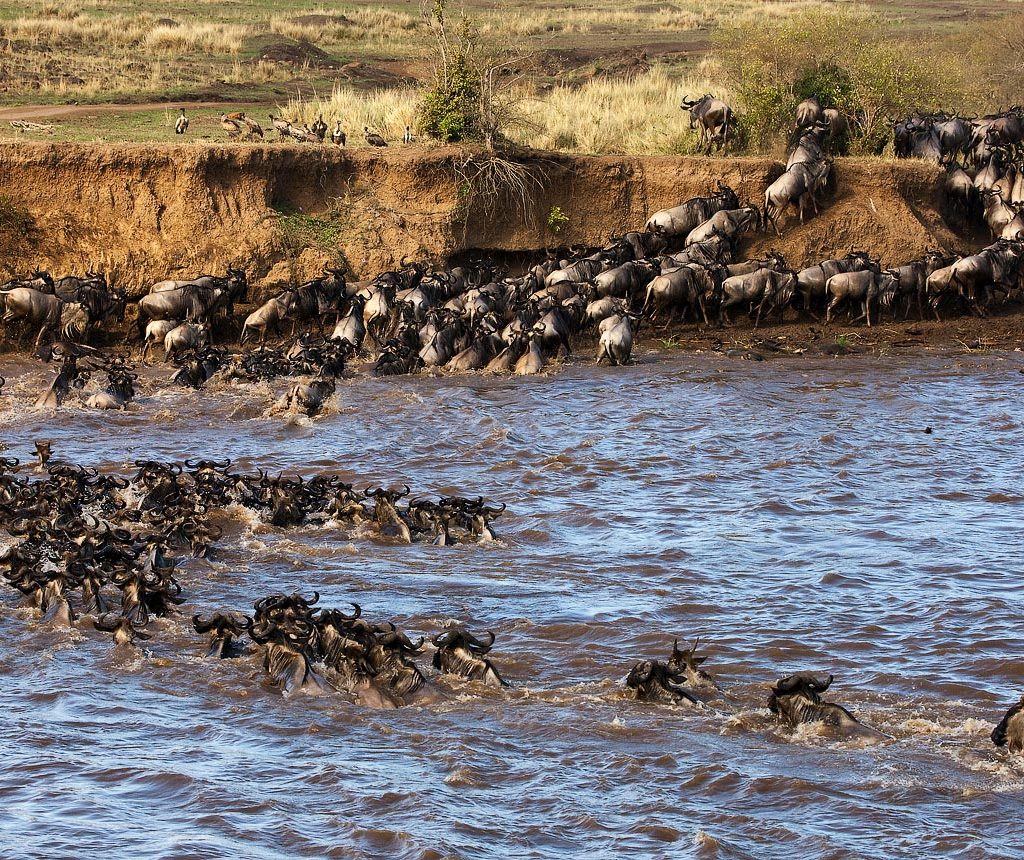
The Great Migration: Timing Is Everything
The Great Migration is the world’s most spectacular wildlife event—and it happens in both parks, just at different times of year. Understanding the migration cycle is crucial for choosing your destination.
Understanding the Migration Cycle
The Great Migration is a year-round phenomenon where approximately 1.5-2 million wildebeest, 200,000 zebras, and 400,000 gazelles follow an ancient circular route between the Serengeti and Masai Mara in search of fresh grass and water.
Month-by-Month Migration Calendar:
January-March: Southern Serengeti (Calving Season)
- Herds concentrate in the Ndutu region and the southern plains
- Peak calving occurs (approximately 500,000 calves born in February-March)
- Predator action intensifies with vulnerable young
- Excellent for photography and dramatic predator-prey interactions
April-May: Western Serengeti
- Herds begin moving northwest
- The rainy season means fewer tourists and lower prices
- Grasslands are lush and green
June: Western Corridor (Grumeti River Crossings)
- First major river crossings at the Grumeti River
- Massive crocodiles await the crossing herds
- Less crowded than the Mara River crossings
July-August: Northern Serengeti → Masai Mara
- Herds begin crossing into Kenya
- Peak time for Mara River crossings (though exact timing varies)
- This is prime time for both the northern Serengeti and the Masai Mara
September-October: Masai Mara
- Herds are fully established in the Mara
- Peak tourist season
- Best time for river crossing attempts (wildebeest cross back and forth)
- Highest accommodation prices
November: Return Journey Begins
- Short rains arrive
- Herds start moving back toward Tanzania
- Fewer tourists, good value
December: Southern Serengeti
- Herds return to calving grounds
- Cycle prepares to begin again
Which Park for the Migration?
Choose Masai Mara if:
- You’re travelling from July to October
- You want to see dramatic Mara River crossings
- You prefer easier logistics and shorter distances
- You have limited time (3-4 days for a Mara safari is sufficient)
Choose Serengeti if:
- You’re travelling December-June
- You want to see the calving season (January-March)
- You want to avoid peak crowds
- You want to experience the full migration circuit
- You’re combining with other Tanzanian parks
The Reality of River Crossings
Let’s be honest: river crossings are unpredictable. The wildebeest don’t check calendars, and they can cross the Mara River dozens of times or not at all on any given day. If witnessing a crossing is your primary goal, plan to spend at least 5-7 days in the northern Serengeti or Masai Mara during peak season (late July-September) to maximize your chances.
The best river crossing locations in the Masai Mara are typically near the Mara Serena and along the northern border. In the Serengeti, the Kogatende region offers excellent crossing viewing opportunities.
Winner for Migration (July-October): Masai Mara
Winner for Full Migration Experience: Serengeti (if timing multiple trips)
Winner for Calving Season: Serengeti (no contest)
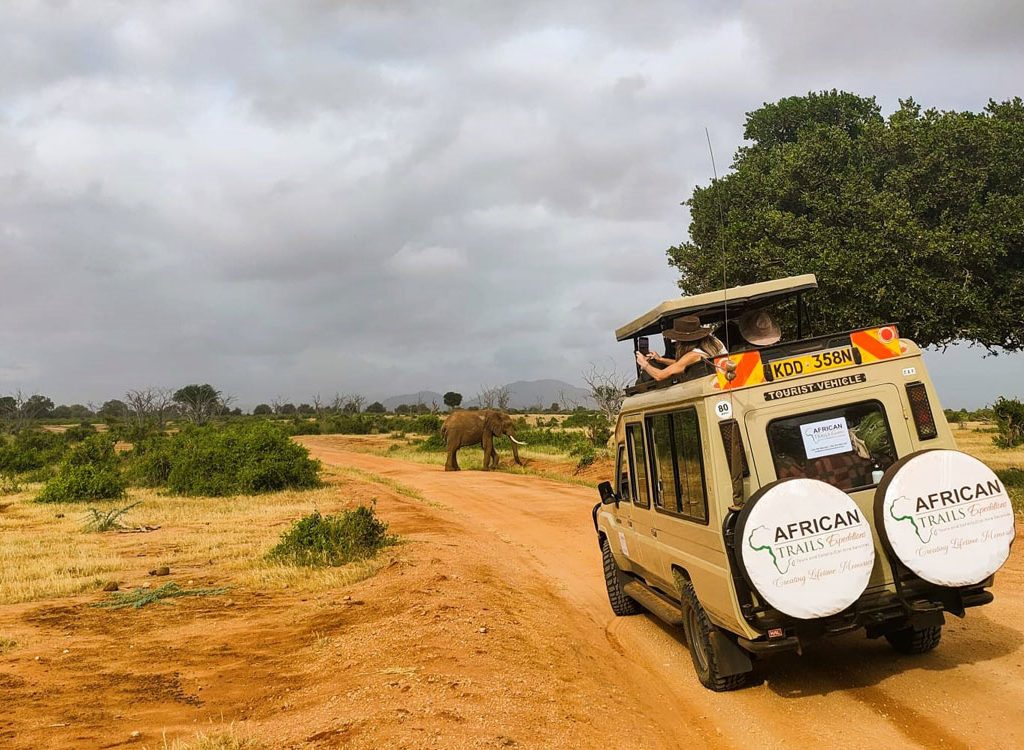
Accessibility: Getting There and Getting Around
Logistics matter, especially when vacation days are limited. Here’s the reality of accessing each destination.
Reaching Masai Mara
From Nairobi (most common route):
- By road: 5-6 hours drive (270 km) on decent roads
- By air: 45-60 minute scheduled or charter flight to Mara airstrips
- Multiple daily flights available
- Can combine with Nairobi city arrival and same-day transfer
Pros
- Can drive if you want to save money or enjoy road trip scenery
- Multiple entry gates (Talek, Sekenani, Oloolaimutia, Musiara)
- Easy to reach from Nairobi as a standalone destination
Cons
- Road journey can be bumpy on final stretches
- Traffic bottlenecks at park gates during peak season
Reaching Serengeti
Main access routes:
- Kilimanjaro/Arusha route: Fly into Kilimanjaro International Airport (JRO), drive to Arusha (1 hour), then either:
- 7-8 hour drive through Ngorongoro Conservation Area to Serengeti
- Fly from Arusha to Serengeti airstrips (1-1.5 hours)
- Zanzibar route: Fly directly from Zanzibar to northern Serengeti (popular for safari+beach combos)
Pros
- Multiple airstrips throughout the park (Seronera, Kogatende, Lobo, Kusini, Grumeti)
- Can position yourself near different migration locations
- Excellent internal flight network
Cons
- Generally requires flights for time-efficient access
- Longer distances between lodges within the park
- More complex logistics for multi-camp itineraries
Internal Travel and Game Drives
Masai Mara
- Shorter distances mean you can stay in one camp and access most areas
- Game drives typically 3-4 hours
- Easy to do morning and evening drives from same base
Serengeti
- Often requires moving camps to follow migration
- Longer game drives common (sometimes 4-6 hours)
- Fly-camping and mobile camps follow the herds
- More driving time but also more diverse scenery
Winner for Accessibility: Masai Mara (especially for road-trippers and shorter trips)
Winner for Internal Flexibility: Serengeti (more airstrip options for positioning)
Accommodation Options: From Tented Camps to Luxury Lodges
Both destinations offer stunning accommodation options, from authentic bush camps to five-star luxury lodges
Masai Mara Accommodation Styles
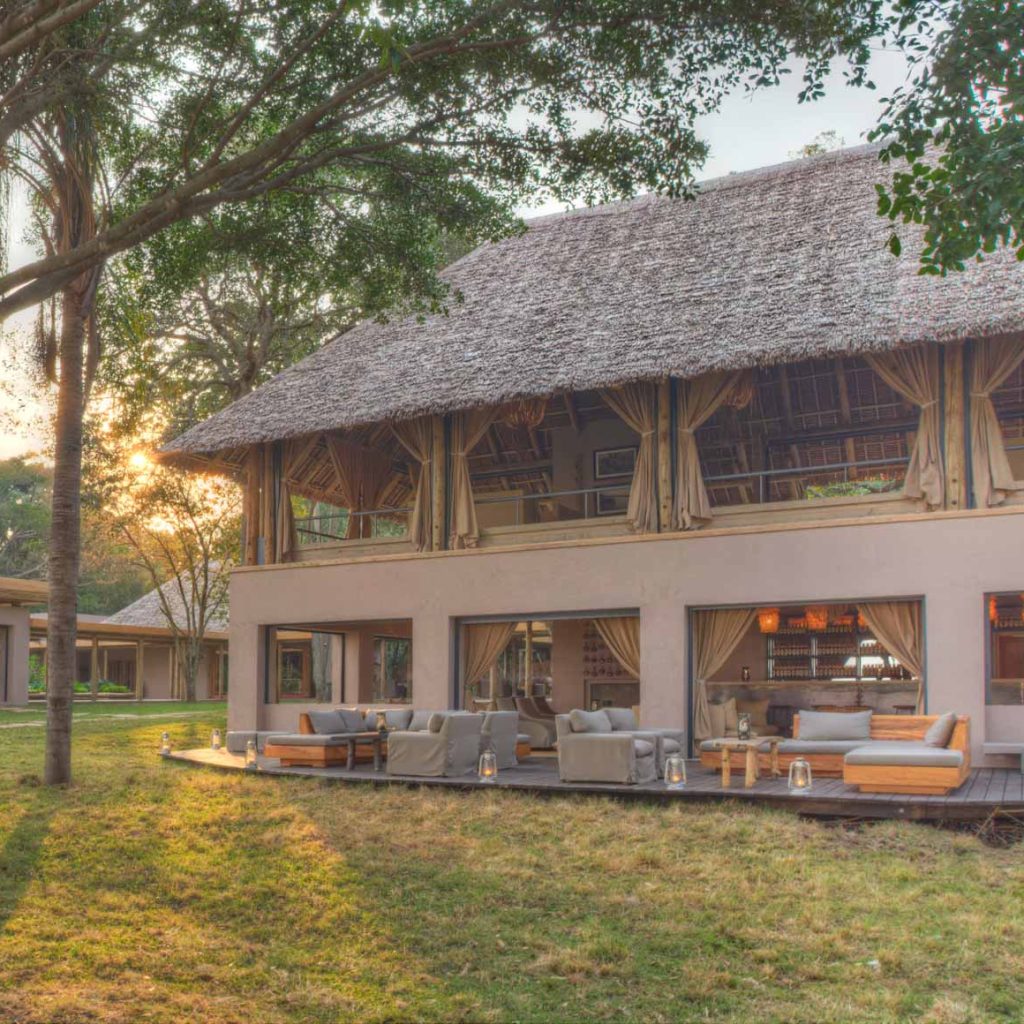
Classic Tented Camps: Traditional East African safari camps with canvas tents on raised platforms, en-suite bathrooms, and often outdoor showers. Examples include Governors’ Camp, Mara Plains Camp, and Basecamp Mara.
Luxury Lodges: Permanent structures with modern amenities, swimming pools, and full-service facilities. Popular options include Angama Mara (positioned on the escarpment with stunning views) and Mahali Mzuri (Sir Richard Branson‘s luxury camp).
Conservancy Camps: Many excellent camps are located in private conservancies bordering the reserve (like Mara North, Naboisho, Olare Motorogi). These offer:
- Lower guest numbers
- Night drives (not allowed in the reserve itself)
- Walking safaris
- More exclusive game viewing
- Supporting community conservation
Budget Options: Basic camping and budget lodges are available in Talek and near entry gates, typically $80-150/night including meals.
Serengeti Accommodation Styles
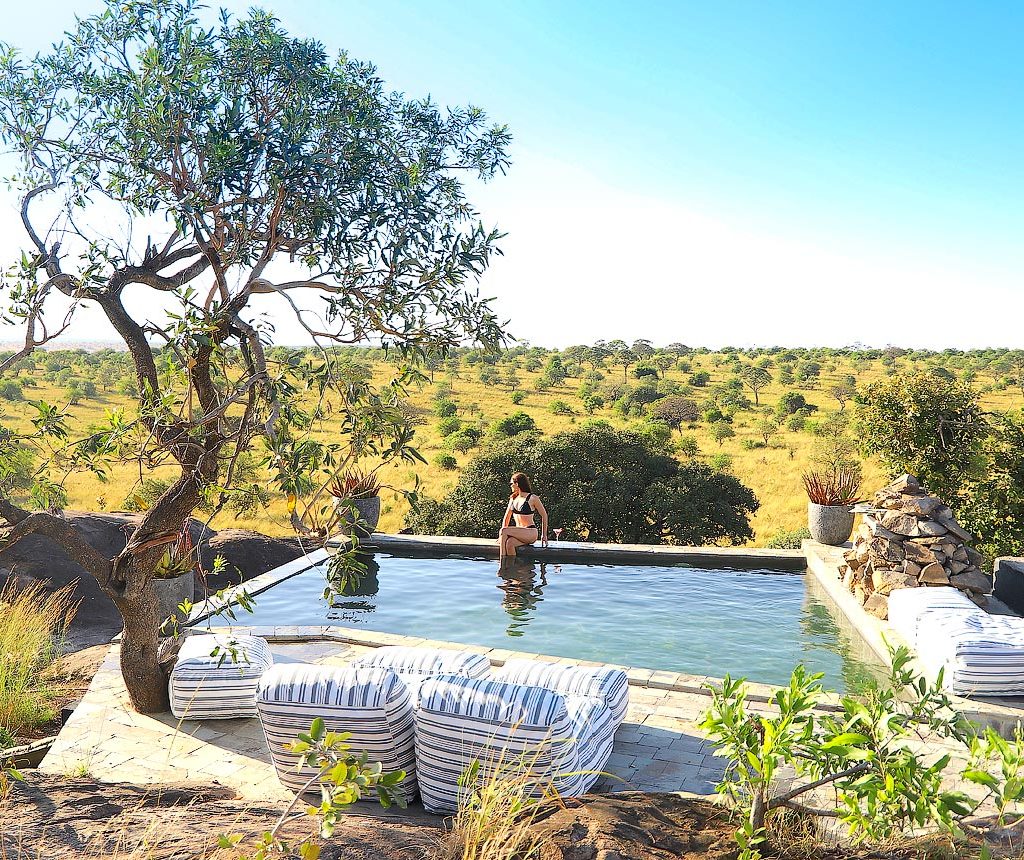
Mobile Tented Camps: The Serengeti is famous for mobile camps that literally follow the migration. These semi-permanent camps move 2-3 times per year to position guests near the action. Companies like Nomad Tanzania and &Beyond offer excellent mobile camps.
Permanent Tented Camps: Luxurious fixed camps like Dunia Camp, Namiri Plains, and Ubuntu Camp offer high-end amenities with classic safari ambiance.
Safari Lodges: The Serengeti has some of Africa’s most iconic lodges:
- Four Seasons Safari Lodge (ultra-luxury with infinity pool overlooking waterhole)
- Singita lodges (three properties offering unparalleled luxury)
- Serengeti Serena Safari Lodge (positioned on hills with panoramic views)
Unique Stays:
- Balloon safaris with champagne bush breakfasts (available in both parks)
- Sleep-out platforms under the stars
- Private villas with dedicated guides and vehicles
Location Matters
In the Masai Mara:
- Mara Triangle (west): Quieter, better managed, fewer vehicles
- Greater Mara (east): More lodges, easier access, higher concentrations during migration
- Conservancies: Best for exclusivity and special activities
In the Serengeti:
- Seronera (central): Year-round wildlife, easily accessible, good base
- Northern Serengeti (Kogatende): Best for July-October migration and river crossings
- Western Corridor: June-July for Grumeti crossings
- Southern Serengeti (Ndutu): December-March for calving season
Winner for Accommodation Variety: Tie (both exceptional)
Winner for Following Migration: Serengeti (mobile camps)
Winner for Conservancy Experiences: Masai Mara
Crowds and Exclusivity: Finding Solitude on Safari
Let’s address the elephant in the room: crowds can impact safari experiences.
Masai Mara: The Crowd Reality
During peak season (July-October), especially August-September, the Masai Mara sees significant visitor numbers. Here’s what to expect:
The downsides:
- Multiple vehicles (sometimes 10-20+) at major sightings like kills or river crossings
- Traffic jams at river crossing points
- Popular lodges can feel busy
- Less feeling of “wilderness solitude”
The upsides:
- Multiple eyes finding wildlife means you rarely miss major sightings
- Guides communicate to help you find action quickly
- The wildlife is so abundant it’s still spectacular despite other vehicles
- Experienced guides know how to position for best views
How to avoid crowds in the Mara:
- Stay in conservancy lodges (game viewing outside the reserve)
- Visit during shoulder months (July and October have fewer people than August-September)
- Choose camps with vehicle limits per sighting
- Book private conservancy game drives
- Start game drives very early (5:30-6:00 AM) to beat other vehicles
Serengeti: More Space, Fewer Vehicles
The Serengeti’s vast size means crowds are far less of an issue, even during peak season.
Why it feels more exclusive:
- 10 times larger area spreads visitors out
- Fewer lodges and camps overall
- Stricter vehicle limits at sightings in some areas
- Many remote regions see very few vehicles
Where crowds can occur:
- Seronera (central Serengeti) during peak season
- Very popular lodges and public campsites
- During peak migration river crossing events in the north
Most exclusive areas:
- Northern Serengeti (except during crossing season)
- Western Corridor (outside June-July)
- Southern plains (December-March sees visitors but still spacious)
- Private concessions like Singita Grumeti
Private Conservancies: The Best of Both Worlds
In the Masai Mara, private conservancies offer the best solution to crowds:
- Limited beds (some conservancies have just 2-3 camps)
- Exclusive game viewing rights
- Night drives and walking safaris (not allowed in main reserve)
- Support for local Maasai communities
- Premium experience with fewer vehicles
Top conservancies include Mara North, Naboisho, Olare Motorogi, and Ol Kinyei.
Winner for Solitude and Space: Serengeti
Winner for Exclusive Conservancy Experiences: Masai Mara
Most Crowded: Masai Mara (August-September peak)
Best Time to Visit: Beyond the Migration
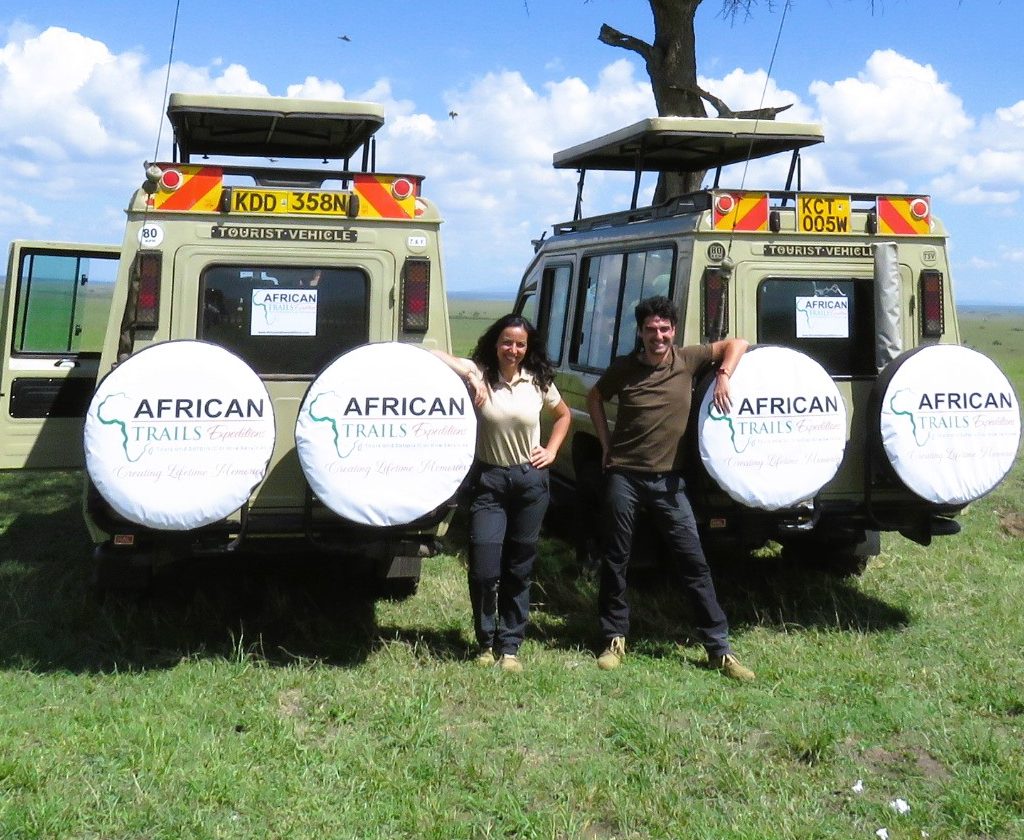
While the Great Migration dominates planning discussions, there’s more to consider.
Masai Mara: Month-by-Month
July-October (Peak Dry Season/Migration):
- Pros: Migration is in Kenya, excellent game viewing, Mara River crossings, dry weather, clear skies for photography
- Cons: Crowds, highest prices, hot and dusty, heavy booking required months in advance
- Verdict: Best for first-timers prioritizing migration, despite crowds
November-March (Short Rains + Dry Season):
- Pros: Fewer tourists, excellent resident wildlife, green landscapes, baby animals, better prices (20-40% off)
- Cons: Short rains in November can mean muddy roads, migration is in Tanzania
- Verdict: Excellent value period, especially January-March
April-June (Long Rains/Green Season):
- Pros: Lowest prices (up to 50% off), very few tourists, lush scenery, excellent birding, young animals
- Cons: Heavy afternoon rains, some roads impassable, some camps close, tougher wildlife spotting in tall grass
- Verdict: Best for photographers who love dramatic skies and budget travelers who don’t mind rain
Serengeti: Month-by-Month
December-March (Calving Season, Southern Plains):
- Pros: Peak calving season, incredible predator action, fewer tourists than Mara peak season, pleasant weather, excellent photography
- Cons: Can be hot, afternoon thunderstorms possible, concentrated in southern region
- Verdict: Possibly the best time—dramatic wildlife action with manageable crowds
April-May (Long Rains):
- Pros: Lowest prices, virtually empty parks, lush landscapes, dramatic skies
- Cons: Heavy rains, difficult roads in southern plains, some camps closed
- Verdict: Only for adventurous travelers or those on tight budgets
June (Western Corridor):
- Pros: Grumeti River crossings, fewer tourists than northern Serengeti later, good weather
- Cons: Migration timing can vary, limited accommodation in this region
- Verdict: Underrated sweet spot for river crossings without Mara crowds
July-October (Northern Serengeti):
- Pros: Mara River crossings, excellent weather, full Serengeti access, can combine with Masai Mara
- Cons: Higher prices, more tourists in northern region, very dry and dusty
- Verdict: Peak season for a reason—spectacular but expect company in the north
November (Short Rains):
- Pros: Herds returning south, fewer tourists, good wildlife overall, shoulder season prices
- Cons: Short rains can affect southern access, unpredictable migration timing
- Verdict: Great value month if you’re flexible
Weather Comparison
Both parks share similar weather patterns as they’re connected ecosystems:
Dry seasons:
- June-October: Main dry season (best general wildlife viewing)
- January-February: Short dry season
Rainy seasons:
- March-May: Long rains (heaviest rainfall)
- November-December: Short rains (brief afternoon showers)
Temperature:
- Daytime: 20-28°C (68-82°F) year-round
- Early morning game drives: 10-15°C (50-59°F)
- Pack layers for temperature changes
Winner for Best Overall Conditions: June-October (both parks)
Winner for Unique Experience: December-March Serengeti (calving season)
Winner for Value: Green season in both (April-May)
Which Should First-Time Safari-Goers Choose?
If this is your first African safari, here’s my honest recommendation based on different priorities:
Choose Masai Mara If:
✅ You have limited time (5-7 days total) The Mara’s proximity to Nairobi means less travel time, more game viewing. You can do a 3-4 day Mara safari and still have time for a beach extension or Nairobi exploration.
✅ You’re traveling July-October This is when the migration is in Kenya. If your dates are fixed to these months, the Mara makes sense.
✅ You prefer simpler logistics One park, shorter distances, easier access. Less complicated for first-time safari planners.
✅ You want guaranteed abundant wildlife The Mara’s concentrated game means you’re almost certain to have spectacular sightings even on a short visit.
✅ You’re okay with other safari vehicles If crowds don’t bother you and you prefer action over solitude, the Mara delivers consistent sightings.
✅ Budget is a primary concern Generally 15-25% less expensive than equivalent Serengeti safaris, especially if you drive from Nairobi.
Choose Serengeti If:
✅ You want the “Out of Africa” experience The Serengeti offers that iconic, endless horizon feeling that epitomizes African wilderness. It’s more romantic, more expansive, more untouched.
✅ You’re traveling December-June These months offer the Serengeti at its best—calving season, Grumeti crossings, and the migration in Tanzanian territory.
✅ You value solitude and space Even during peak season, the Serengeti feels less crowded. You’ll often be the only vehicle at sightings.
✅ You want to combine with Ngorongoro Crater The Ngorongoro Crater is one of Africa’s most spectacular wildlife destinations, and it’s seamlessly combined with a Serengeti safari.
✅ You have 10+ days With more time, you can properly explore the Serengeti’s different regions and not feel rushed.
✅ You’re planning a safari-and-beach holiday Serengeti to Zanzibar is one of Africa’s classic combinations, with easy flights and perfect complementary experiences.
My Personal Recommendation for First-Timers:
If you’re visiting July-October and have less than 8 days: Masai Mara
If you’re visiting December-March or have 10+ days: Serengeti + Ngorongoro
If you want the absolute best of both: Combined Kenya-Tanzania safari (12-14 days)
The truth is, you can’t go wrong with either choice. Both offer world-class safari experiences that will create memories lasting a lifetime
Final Verdict: Our Recommendation
After comparing every aspect of these two legendary destinations, here’s the bottom line:
The Masai Mara is Perfect For:
- Time-limited travelers (7 days or less)
- July-October visitors wanting to see the migration
- First-time safari-goers wanting guaranteed wildlife
- Budget-conscious travelers (15-25% savings)
- Those prioritizing dramatic river crossings
- Road trip enthusiasts (driveable from Nairobi)
- Travelers who don’t mind crowds during peak season
The Serengeti is Perfect For:
- Travelers with 10+ days to properly explore
- December-June visitors (calving season and southern migration)
- Those seeking vast, uncrowded wilderness
- Photographers wanting space and fewer vehicles
- Travelers combining with Ngorongoro Crater
- Safari-and-beach planners (Zanzibar combinations)
- Those wanting diverse ecosystems in one park
Can You Visit Both?
Absolutely! A combined Masai Mara and Serengeti safari is the ultimate East African experience.
A look at our combined Mara and Serengeti Safari: Highlights of Kenya and Tanzania Safari
What African Trails Expeditions Recommends:
Based on our years of experience leading safaris, we typically guide clients toward:
First-time visitors on standard vacation time (7-10 days):
Masai Mara (3-4 nights) + Amboseli or Samburu (2-3 nights) if visiting July-October
OR
Serengeti (4 nights) + Ngorongoro (2 nights) + Zanzibar (3-4 nights) if visiting December-June
Serious wildlife enthusiasts with time (12-14 days):
Combined circuit: Tarangire → Serengeti → Ngorongoro → Masai Mara → Lake Nakuru
Photographers and honeymooners:
Serengeti (positioning based on season) + exclusive conservancy camps + Zanzibar
Families with children:
Masai Mara (easier logistics, shorter drives, reliable wildlife)
Ready to Book Your Dream Safari?
Whether you choose the Masai Mara, Serengeti, or both, African Trails Expeditions specializes in creating personalized safari experiences that match your budget, timeframe, and interests
Why Book with African Trails Expeditions?
✓ Expert Local Knowledge: Our guides have decades of combined experience in both Kenya and Tanzania
✓ Flexible Itineraries: We customize every safari to your specific interests and budget
✓ Small Group Guarantee: Maximum 6 guests per vehicle for optimal viewing
✓ Exclusive Partnerships: Access to premium lodges and conservancy camps
✓ 24/7 Support: On-ground assistance throughout your journey
✓ Sustainable Tourism: We support local communities and conservation efforts
Our Most Popular Packages:
MASAI MARA
Classic Masai Mara Safari
DURATION:
5 Days/4 Nights
Thrilling wildlife encounters, iconic Maasai people and great adventures
SERENGETI, NGORONGORO
Serengeti & Ngorongoro Adventure
DURATION:
7Days/6 Nights
Discover unique landscapes, and huge wildlife populations
Recent Posts
First Time Safari in Africa: Complete Planning Guide
Masai Mara vs Serengeti: Which is Better?
NAIROBI NATIONAL PARK
All Categories
- Travel Tips (2)
- Uncategorized (1)
- Wildlife (2)

